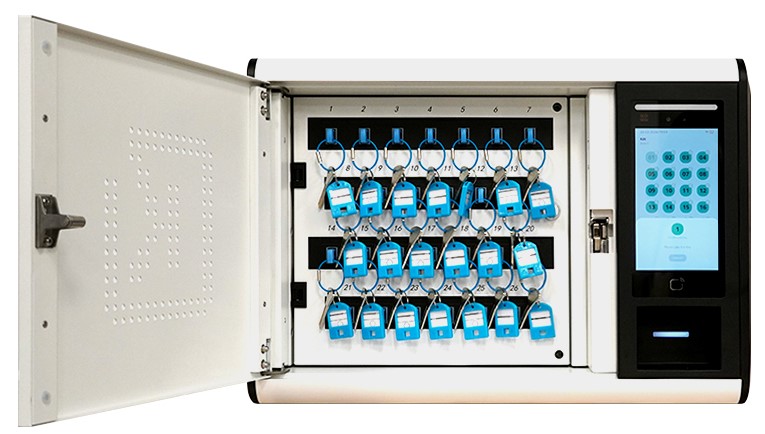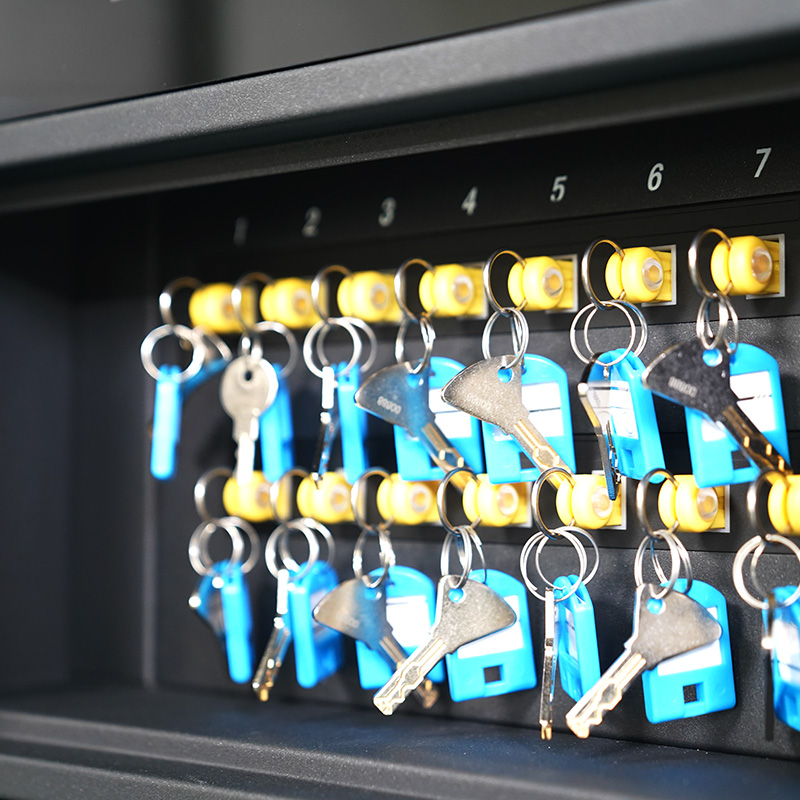Key management is becoming increasingly important in the modern office environment. In order to manage and use keys more efficiently, many companies and organizations are starting to use smart key cabinet software. Today, we'll explore the two main types of key cabinet management: fixed location management and random location management. Understanding the pros and cons of these two approaches can help you choose the solution that best suits your needs.

Fixed Position Management
What is Fixed Location Management?
Fixed location management means that each key has a predetermined location. This means that whenever you need to pick up or return a key, you must put it back in its designated location. This system ensures that the key is always in a known location, making it easy to track and manage.
Advantages
Efficient tracking: Each key has a fixed location, making it easy to find and track quickly.
Clear responsibility: Who has accessed which key can be clearly documented and responsibility can be clearly assigned.
High security: Permissions can be set so that only authorized personnel can access keys in specific locations.

Disadvantages
Low flexibility: Keys need to be taken out and returned in strict accordance with the specified location, which may not be very flexible.
Requires management and maintenance: If the key is placed in the wrong location, it may lead to confusion and require additional management and maintenance.
Applicable Scenarios
Fixed location management is particularly suitable for highly secure and strictly managed locations, such as banks, government organizations and large corporations.
Casual Location Management
Casual Location Management allows users to pick up and return keys from any available location (between different key cabinets) without the need for a specific location. This approach is more flexible and suitable for environments that do not require strict control.
Advantages
Flexibility: Users can leave their keys in any available location, making it easy to use.
Simple to manage: there is no need to memorize the fixed location of each key, reducing management complexity.
Quick access: keys can be accessed and returned at any time, reducing waiting times.

Disadvantages
Difficulty in tracking: because the keys are not in a fixed location, it may make it more difficult to locate and track them.
Lower security: without strict management, it may lead to the risk of key loss or misuse.
Applicable Scenarios
Random location management is suitable for places with high flexibility requirements and relatively low security requirements, such as small and medium-sized enterprises and shared office spaces.
Conclusion
Which key cabinet management method you choose depends on your specific needs and usage scenarios. If you need efficient key tracking and high security, then fixed location management is a better choice. If you value flexibility and ease of management more, then casual location management may be more suitable for you.
Post time: May-28-2024
